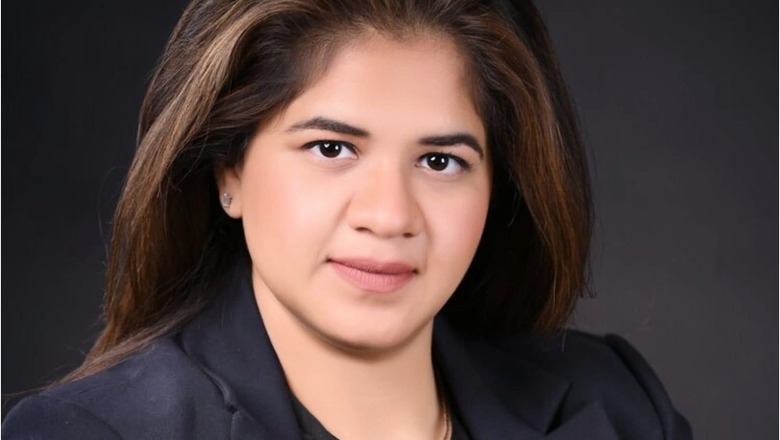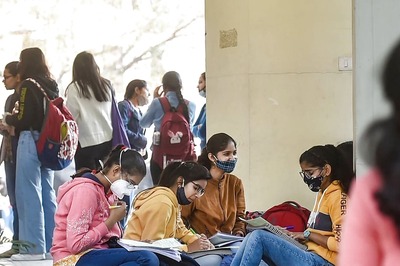
views
A lot goes into the making of a film beyond what we see on screen. While the actors and the director hog most of the limelight, several other artists and technicians, depending on the size of the production, work tirelessly on and off the sets to bring a project to fruition. New departments are being created besides the traditional costume, music, cinematography, etc, as filmmaking evolves around the world.
This News18 series, Off-screen Stars, is to celebrate people working behind the camera during production, as well as those performing various pre- and post-production jobs, that are essential for a project to come alive.
Hollywood star Sharon Stone recently declared she was misled about nudity in the 1992 film Basic Instinct. Years after the release of Dayavan, Madhuri Dixit had said that she regretted doing the kissing scene with Vinod Khanna. Nargis Fakhri had said she wasn’t comfortable with “too much kissing” in a song from Azhar. If there’s one part of the job that many actors are uncomfortable with, it’s intimate scenes. While the actor having a clear conversation with the director can help, film and TV sets in the West are now using intimacy coordinators to make them feel comfortable during sex scenes and to be sure that no one is rushed into anything they haven’t agreed to.
If you don’t know what an intimacy coordinator does, don’t worry, assistant director Aastha Khanna didn’t know such a job existed either. It was only when she started researching on how intimate scenes are shot and used as narrative tools, that she found out that there is something called an intimacy coordinator on the sets of a film. When she realized that the Indian market did not have a trained expert in the field, she took a course under IPA (Intimacy Professionals Association), thus making her first certified intimacy coordinator in India. She has been an assistant director on over half a dozen feature films in India, and now she not only works as an intimacy coordinator, but is also training more professionals in the field.
The Job Came to Be Only After the #MeToo Movement
“I was doing some research on how intimacy can be a narrative tool, and how the West shoots such scenes. Several articles were talking about use of intimacy in shows like Sex Education and Normal People. There were shows with a very organic version of intimacy on screen. And I was trying to figure out how the West has managed to crack that. That’s when I came to know there’s something called an intimacy coordinator. I wondered, I went to film school, how come I didn’t know this? And I realized that the job role only came to be after the #MeToo movement.”
What Does an Intimacy Coordinator Do?
“In India there was nobody really who was doing the entire job role of an intimacy coordinator. Alongside being a coordinator who handles the production end, legal, compliance, as a mental first aider, an intimacy coordinator is also certified in bystander intervention and trauma relief. There’s a whole plethora of training that goes into becoming an intimacy coordinator. When Covid hit and I was at home, waiting for my film to start shooting, I took the opportunity to do the training course. Your main subjects as an intimacy coordinator are psychology, law and filmmaking. Those three kind of come together for the job.”
The Need for an Intimacy Coordinator
“We’ve heard so many #MeToo stories where performers have come out and said 20 years ago, something happened to me on a film set, and I got no chance to say anything about it. That kind of thing would not have happened if there was an intimacy coordinator on set. This job role was required from the day intimate scenes became part of films. The coordinator’s major job role is also to support the production, to make shooting efficient, make sure that they’re on the right side of the law and safeguard the production, in case of any untoward legal suits that can happen later.
That stands true for also the performers. There’s also a rapport and a trust that an intimacy coordinator needs to have with the performer as their one point of contact when they need to discuss anything relating to consent or boundaries. For productions to kind of adopt this job role, it will take a little bit of time, to realize that it is good for them. But I have had a very encouraging response.”
Not a Gendered Role
“All genders that are performing intimacy require equal amount of support. So we’re trained to be gender neutral. Because of the social construct, they believe that the woman is the victim. But that’s not true in all scenarios. You have to discuss consent and boundaries, especially with men. Most male performers tend to say, ‘I’m okay with everything as long as the female actor is’, if there’s a heterosexual scene. They don’t take time to discuss their own consent. They tend to shun those conversations because of their ego, their machismo that gets in the way. I’ve worked with transgender performers also, it’s very important they have an advocate on set.”
Striking a Balance Between Director and Performer
“If the audition has any sort of intimacy, I step in then. Otherwise, once I have read the script, I have a clear conversation with the director. Then I sit on a one-on-one session with each of the performers, go through each scene with them how much nudity is expected and how much they are okay with. We draw a body map to mark the areas that they are okay and not okay with exposing. Consent is reversible and if on the day of shooting the performer is not comfortable, I always have a plan B. We can use a body double, or change the choreography in a way where it works for their consent. The job is a lot like a stunt coordinator and a dance choreographer married together.”
The Tools
“I have a toolbox, which usually has barriers which create some form of cushioning between genitalia, if you’re doing any form of genital contact in a simulated sex scene. We put a cushion or a Pilates ball, or make the performer with a penis wear an athletic guard, make the performer with a vulva wear sanitary pads. A lot of these are jugaad, but now I have started to make tools of my own. A lot of the customization happens based on what the requirement of the scene is. I always keep deodorants, breath fresheners, skin coloured tapes for coverage, silicon bras, strapless panties, in my toolkit.”
Not Just About Sex Scenes
“Intimacy involves scenes of child birth, any form of LGBTQIA+ stories being told. Or there’s intimacy with minors, like a father-daughter scene that involves, excessive physical touching, then you have to be there for the minor. If an item song is being shot, or an actress is being asked to wear revealing clothing which she is not comfortable with, that also comes under the purview of intimacy. The umbrella of what is intimacy is quite large.”
It’s a Much Larger Cause
Being the only certified intimacy coordinator in India, Aastha cannot be on every film set. So she has founded The Intimacy Collective, a group of intimacy professionals and with their help she plans to establish a training programme for training and certifying ICs in the near future. “The need for intimacy professionals is a much larger cause than me finding a job. Not every single film that gets made in India, that has intimacy, will end up having me as an intimacy coordinator. It is building a whole other market, which is going to build a whole other set of job opportunities for people that are skilled to do it. So it is very important to put the word out that such a job exists.”
Read all the Latest News, Breaking News and Coronavirus News here.




















Comments
0 comment